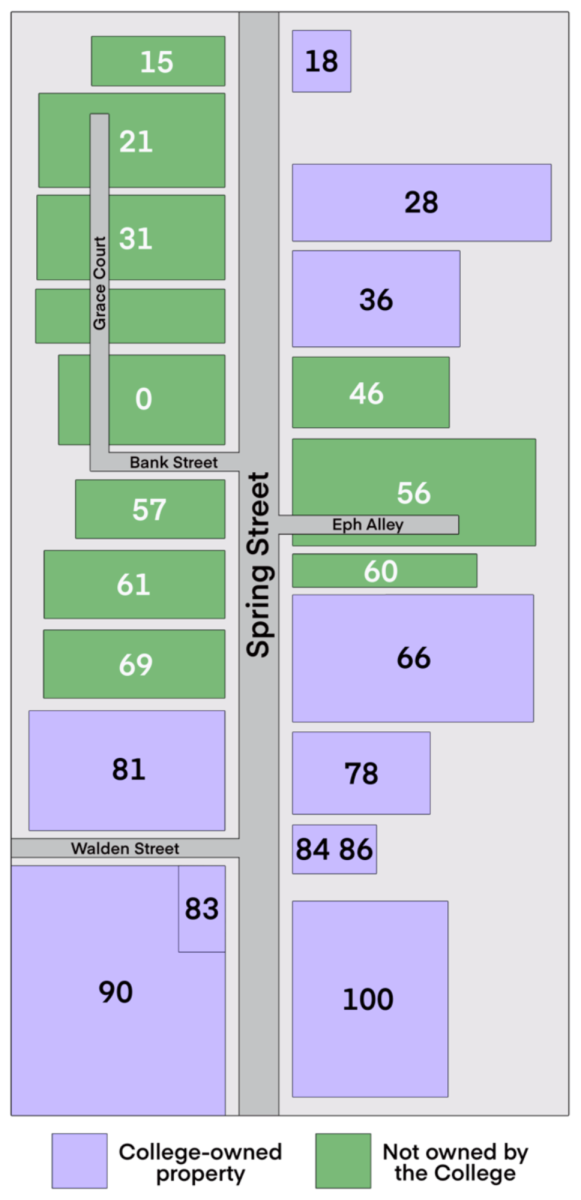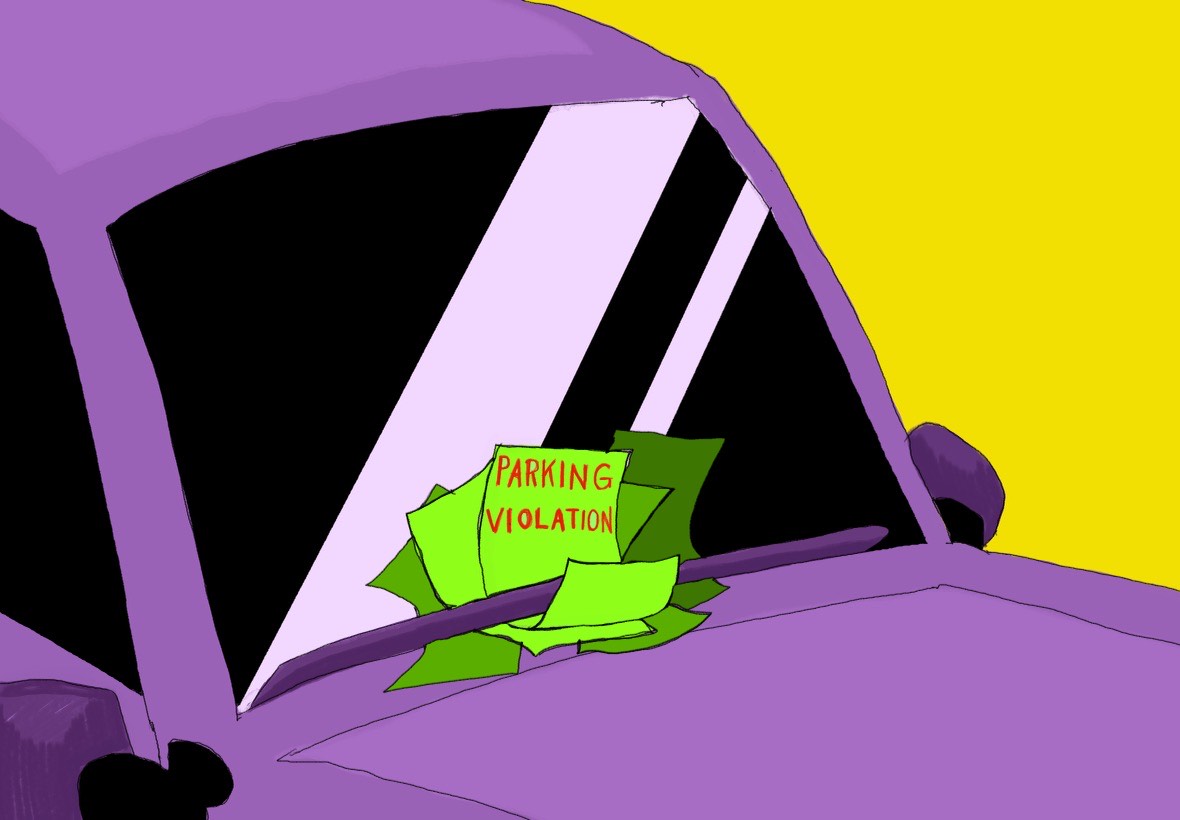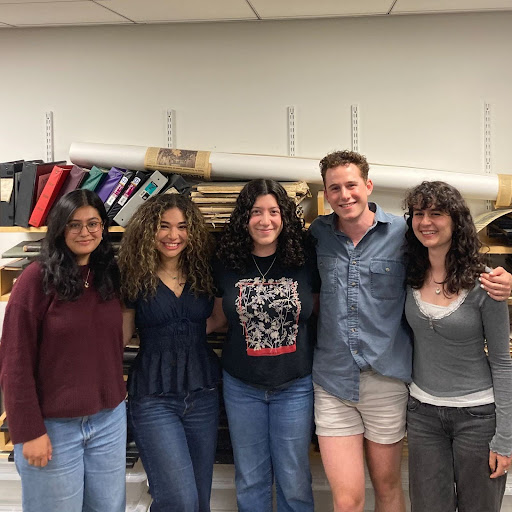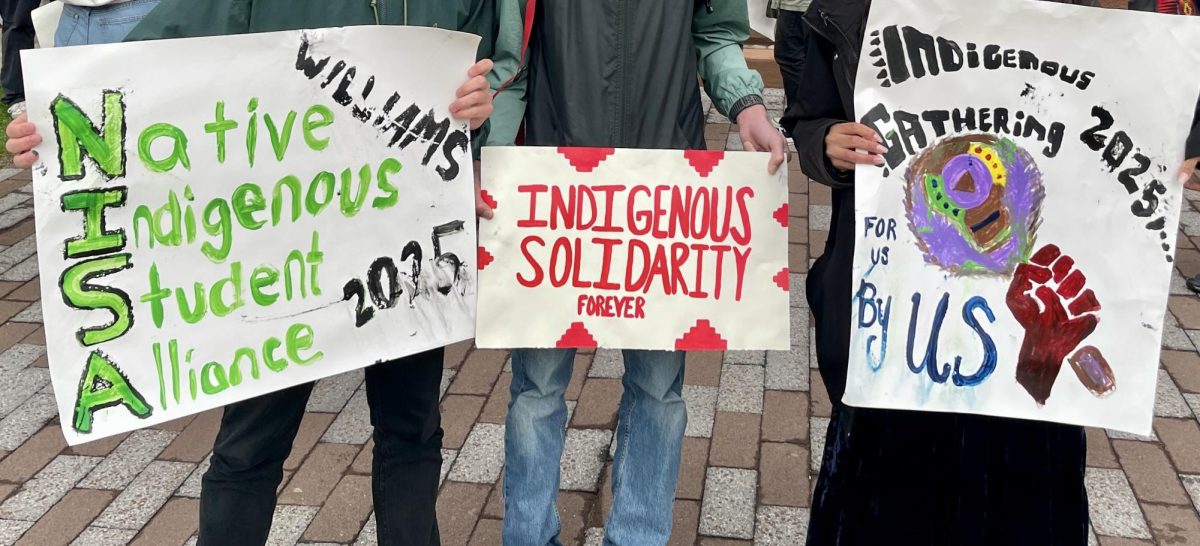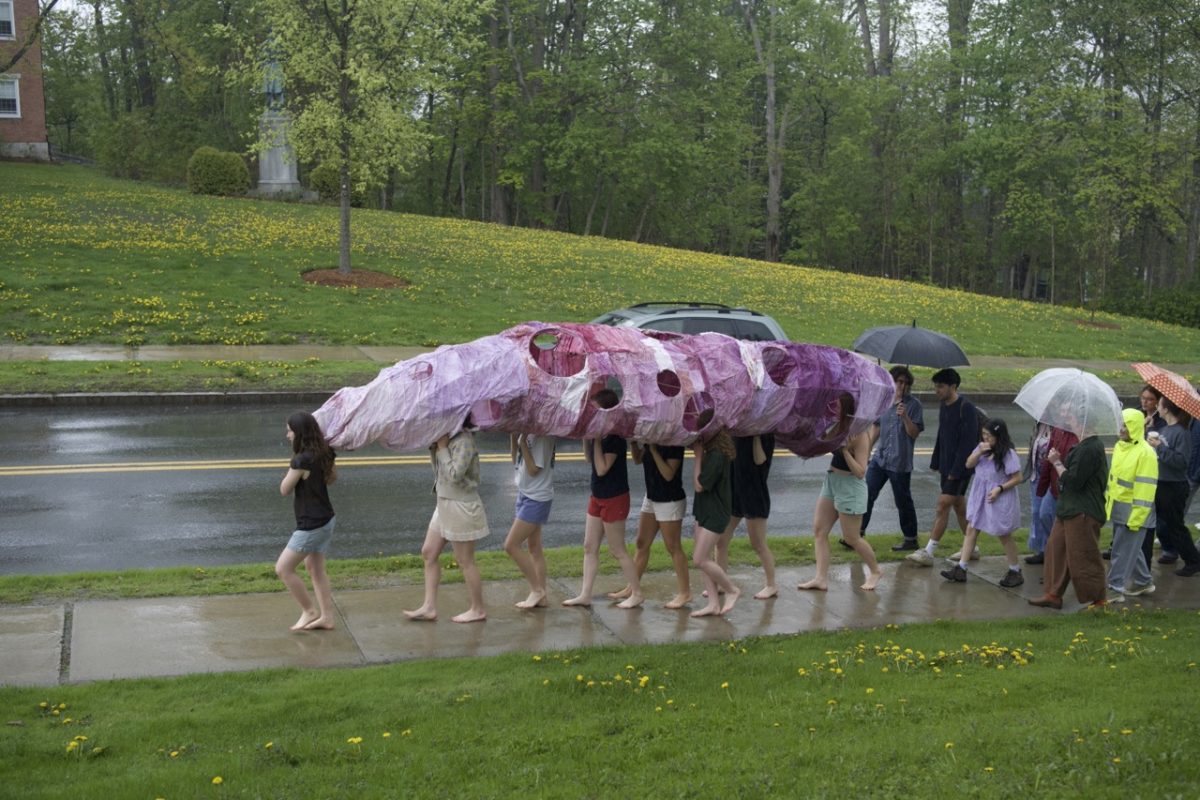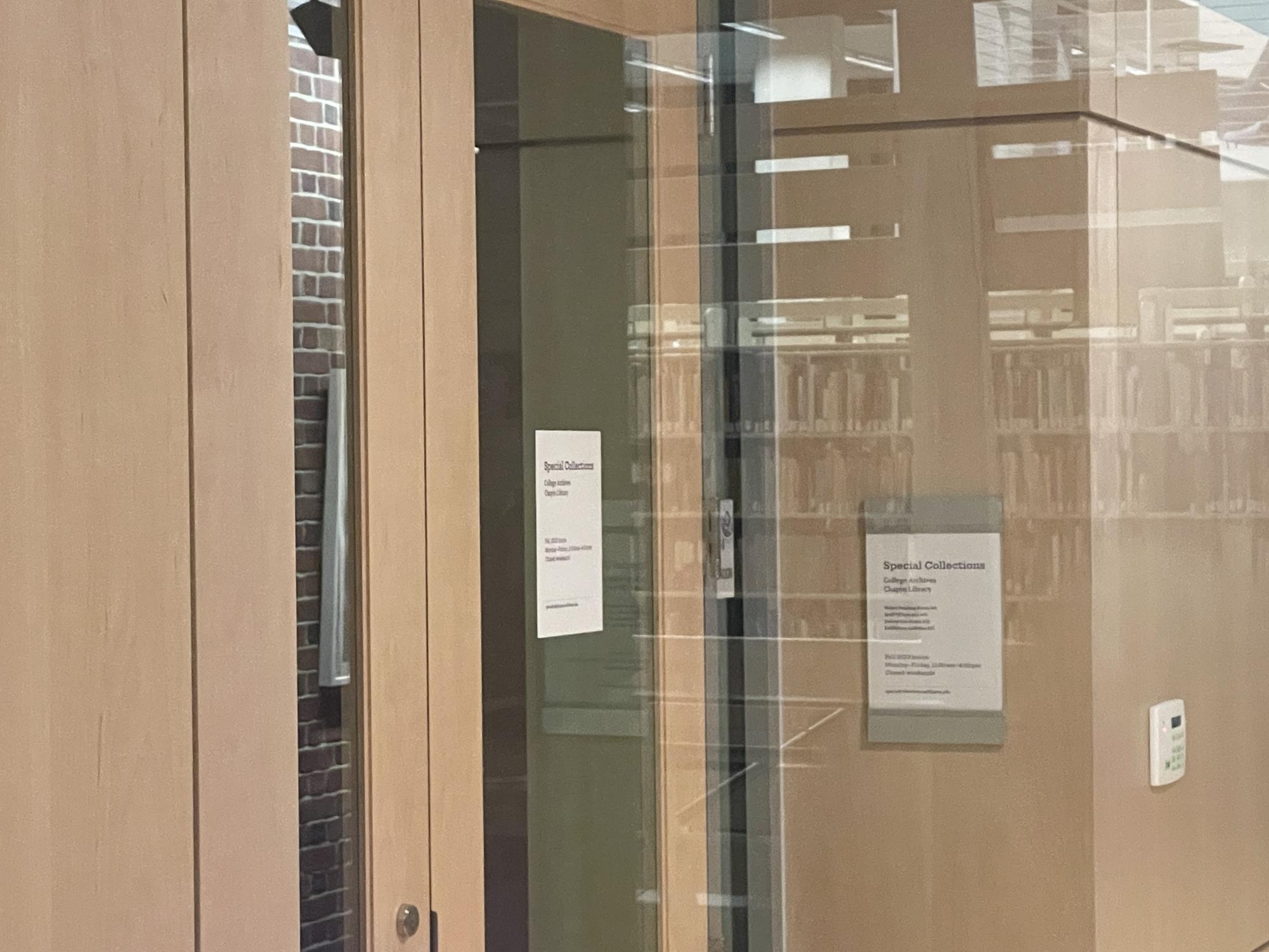
It’s more likely than not that a student at the College has taken a class that included a trip to Special Collections. Most students are familiar with the archival space, which occupies half of Sawyer Library’s fourth floor and houses ancient maps, manuscripts, and one taxidermied snowy owl. And soon, patrons will also be able to view examples of Byzantine music notation and a book of Japanese Koto songs with diagrams of the instruments — both of which Special Collections recently acquired.
According to Chapin Librarian Anne Peale, over 300 visitors came to the Weber Special Collections Reading Room in the past semester to view the materials. Those viewers may be less aware, however, of the intricate process behind acquiring those manuscripts — manuscripts that required Peale to wake up at 6:30 a.m. in order to bid in an auction hosted by Christie’s, a British auction house. The music manuscripts were from a large collection that was recently put up for sale, and Peale collaborated with faculty to purchase them, as is often the case when Special Collections acquires new materials.
“I worked with one of the new faculty members of the music department to help identify materials that would be useful in teaching and that would most help us fill gaps in our collections,” Peale said. “We’re here to serve the needs of the College, and ensuring what we’re acquiring supports that mission is absolutely critical.”
The acquisition process is guided by the “principle of use,” Peale said. Use ranges from student and faculty research, to genealogy inquiries from descendants of long-graduated College students, to requests for images of materials from organizations outside of the College.
This means Special Collections works closely with its patrons, and especially with faculty, when making a purchase. This process often begins with a faculty request for a type of item that is missing from the curriculum, after which Peale will collaborate with faculty to see what items are available on the market and the rare book trade before ultimately determining what is fiscally and ethically appropriate to purchase.
At Chapin, the goal of acquisition is often to diversify the College’s materials, a change from earlier buying practices that is evident in the library’s latest purchases. “We’re increasingly buying East Asian and Islamic material that represent the global history of the book,” Peale said.
But this attention to diversity, Peale said, also raises questions about the ethics of acquisitions from abroad. “There are legal and ethical concerns [about] moving materials, especially manuscript material, out of countries that have a history of colonization and conflict, and we’re always attentive to those concerns when we’re making decisions about purchasing,” she said.
Diversifying the catalog also demands attention to how materials are presented once they’ve been added to the collection.
“The language that former owners or former caretakers, book sellers, and the book trade uses isn’t always the language that librarians would use or that scholars would use,” Peale explained. “Part of our jobs as librarians, as archivists, as curators, is making sure that we pay close attention to the words that we’re using to describe the material in our care, because those words matter. They matter to the discoverability of the material, but they also matter to the people and communities whose experiences they reflect.”
In order to make informed decisions about purchasing materials, it’s also essential to know the provenance of an object — where it has previously been stored — Peale emphasized.
“Like so many things that involve money and business, we always wish for greater transparency,” Peale said. “Certain features of the way the book trade and the auction market work can serve to obscure those histories in ways that are beneficial for the sellers but can be a disservice to our communities here, and it can be frustrating. ”
Peale says the College is lucky to have both generous funding and ample human resources for handling the collections. After a purchase, an acquisitions coordinator handles the billing paperwork and accounting to ensure vendors are paid properly. Then, the book receives a book plate and a call number, and it is entered into Chapin’s local cataloging system, where it receives a dust jacket and an adhesive mylar cover. This, Peale says, would be the process for a simple reference book: manuscript materials, early printed materials, or voluminous college records only take more time and money to enter into the collection.
In this way, cataloging can sometimes be a significant undertaking, Peale said.
Special Collections also accepts donations, anything from a family collection to a student’s scrapbook from their time as a student to an oral history put together by a student organization. However, these donations must be carefully reviewed to ensure that they are in line with Chapin’s curatorial mission. Generally, the library only accepts donations that are related to College history, and when they fall beyond this scope — such as records of Williamstown’s broader history — Chapin works with the donors to ensure materials are still preserved at institutions such as the Williamstown Historical Society, if not at the College.
“When we choose not to accept material that’s offered to us, we always try to work with the person offering it to find a good home for that material,” Peale said. “Because we know that the people who are offering us gifts often have a deep connection to that, and we want it to find a good home.”
To curate a collection of records that comprehensively reflect life at the College, the Records Management Program leads projects to help amass non-traditional materials.For Jessika Drmacich, a records manager and digital research archivist for Special Collections, becoming more intentional about online archives and representation is key.
“Material would just trickle in, and when things trickle in, then they often reflect power structures,” she said. “They often came from Hopkins Hall, records from those who were considered important at the time — and are, of course, still important — but we want to expand our idea of history and expand the idea of what the record is. Because if you look back, you see a lot of archival silences.”
Drmacich works with transfers — which involves transferring current records created in the course of business at the College into the archives — and with gifts, which references materials such as those made by student groups. Her goals include digitizing analog information and avoiding a “digital dark age,” where the materials originally produced online are lost, she said. “It’s similar to when people think of orally transmitted knowledge — things that weren’t documented in the way we document texts,” Drmacich said. “Now, we have a kind of digital deluge, which means curation is more important than ever. If you aren’t curating yourself, it’s going to be lost.”
Drmacich’s goal of ensuring that a range of experiences and types of information about life at the College is preserved is continual. She works closely with student groups to prioritize cultural sensitivity, privacy, and accurate representation of material and diversity in the records. These kinds of projects include events like Archives for Liberation, a look at student activist materials from past years.
When Drmacich first began working at the College, she was shocked to see gaps in the College’s institutional history, blanks that she said she actively worked to fill. “My first week here, I realized that we didn’t have any records on the Multicultural Center or the Davis Center,” she said. “That was one of the first things that I did. Some of them were there, but it was mostly [the] dean’s records, which were very top-down. Actually working with the office, finding what they had in the attic, and working with the people in the office to find out what their stories are is so cool.”
The idea of the “archive,” Drmacich said, must move beyond preserving the histories of those with the most power. “It’s having people think about their own histories as important,” she said. “Otherwise, we just get the loudest voices.”
Drmacich and Peale are both dedicated to expanding and complicating the archives and ensuring that more and more people are able to add to and use Sawyer’s materials.
For Peale, this mission supersedes the importance of any single item or piece of history. “It’s what we do with that object that really makes the difference,” she said. “We’re always thinking about our user community — whether those are faculty, whether those are students, whether those are alumni — when we’re bringing in material, because we want it to get used.”



